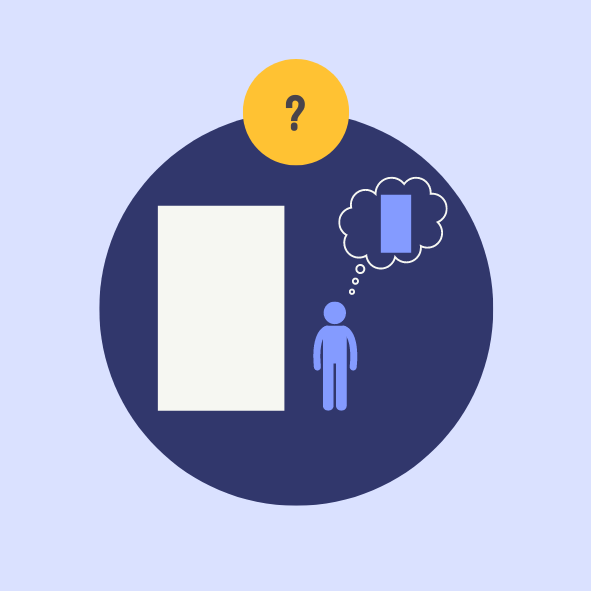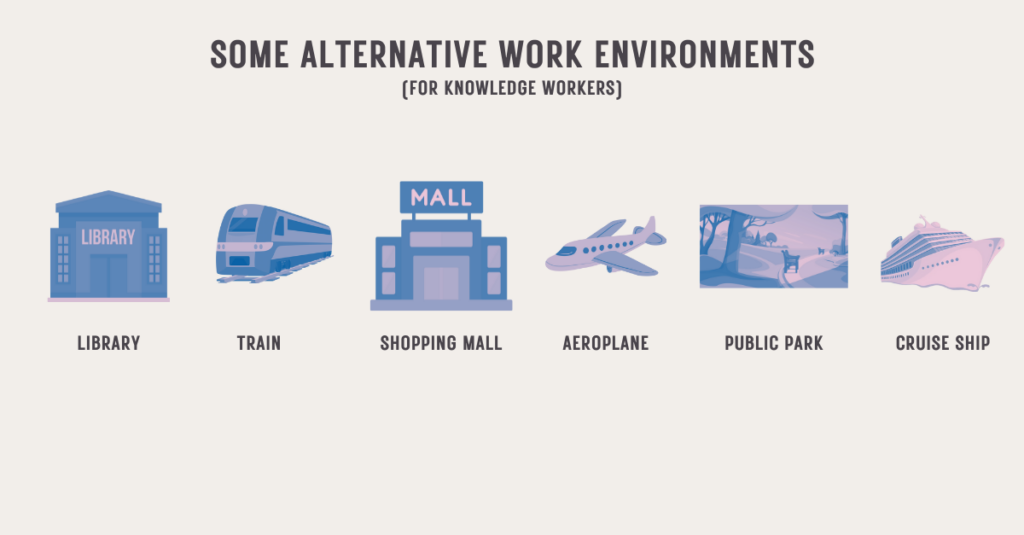
The Quest for Workplace Utopia
What would utopia look like for workplaces? In the realm of human geography, topophilia – the bond between people and their environments – shapes much of our daily experience, including how and where we work. This begs the question: what does the ideal, or utopian, workplace look like through the lens of topophilia?
What would utopia look like for workplaces? In the realm of human geography, topophilia – the bond between people and their environments – shapes much of our daily experience, including how and where we work. This begs the question: what does the ideal, or utopian, workplace look like through the lens of topophilia?
In this article, we won’t just focus on the typical knowledge work environments, which are often centred around office-type buildings. However, let’s consider how we could experience knowledge work from six other environments:

The above-mentioned places can facilitate knowledge workers, albeit for temporary periods as these places are not necessarily their primary workspace destinations but only serve as either transit or short term occasions. However, there are also some people for whom these destinations are in fact primarily their workplaces. So, for the purpose of this article, we will categorise the users of these above places into three distinct groups:
- Visitors: individuals visiting the place for its primary intended purpose.
- Workers: people responsible for the maintenance and operation of the specific places. The primary purpose of the space to the workers is it being their workplace (e.g. the train for the train driver, cruise ship for the captain, cleaners and other staff on the cruise, etc.).
- Working visitors: These individuals see the place for its primary purpose, however, they bring their own work with them and therefore experience the space from a worker-perspective – an alternative workplace – rather than the main primary purpose of the space. From a user perspective, this creates a dual role for the individual as both a worker utilising the space, as well as being a guest or visitor.

What can we learn from these places when comparing the different user types?
The first take-away is that the experience of these settings will vary greatly depending on the user type. The user’s purpose – whether they are visitors, workers, or working visitors – drastically influences their interaction with the environment. Examples of the unique perspectives and experiences of these three personas across the same six alternative work environments are outlined in the below table (click image to enlarge):

Intended primary purposes vs. newly observed purposes
We could argue that, initially, many of the above spaces were built for their primary purposes with the right spaces to operationalise them (the first two rows above). However, over the years, as different types of work began to become more mobile, the spaces have altered to better accommodate the working-visitors (yellow row). Environments traditionally not designed for work, are now being repurposed to accommodate the needs of this growing user group.
The interesting take-away here is that, by adding the third user-type, the experience of the first two primary users types may be altered over time:
- Visitors: to share their experience with other people that come to the same space but for different purposes;
- Workers/Staff: to cater to the worker visitor’s needs that may be different from their usual’s visitor expectations.
Does the presence of the working visitor group take away the experience of the visitor group?
The growing working visitor user group can bring friction points between the original visitor group, for example:
- Library: originally designed as quiet spaces for reading and research, which now also attracts remote workers seeking a distraction-free environment. This can lead to friction with traditional library users if the presence of remote workers results in overcrowding.
- Train: public transport designed for commuting, is now often filled with remote workers using laptops or engaging in work-related calls. This can create friction with other passengers who expect a quiet or more relaxed environment during their commute.
- Shopping Mall: designed for shopping and leisure activities, are now accommodating remote workers seeking alternative workspaces. This shift may create friction with shoppers looking for a quick place to sit and rest, but find limited seating due to remote workers occupying tables for extended periods.
Adaptable Environments for Work
Most of the above six environments have already undergone transformations to better facilitate the working visitors: think of the in-flight Wi-Fi options, additional power outlets in libraries and shopping malls, charging stations for commuters who are waiting for transportation, airport lounges offering a variety of work settings, and alternative services offerings.
This is a typical example of human behaviour altering places – which is a key component of human geography. As individuals increasingly blur the lines between work and leisure, the environments they inhabit evolve in response, more seamlessly accommodating shifting needs, preferences and expectations.
So, should we focus more on transforming public spaces into working spaces to cater to the digital nomads? And vice versa, can we adapt work spaces to contain public space to make traditional office spaces more attractive? Envision a park, with ergonomic desks, laptop screens, powerplugs, free internet, meeting rooms, and sound proofing… would that be appealing? Could that be utopia? Probably not! The world would end up looking too homogeneous. When you try to cater to everyone, in every place, in every scenario, you actually end up creating an ideal place for no one at all.
Mar 18, 2024
Tica Masuku
|
[🎤Are you looking for a keynote speaker for your next event, company off-site or global summit? I'm currently organising my international speaking calendar for 2025. Please get in touch to discuss the possibilities tica.m@spaceful.com.au]
[💡Would you like to know how I can help you or your organisation apply a human geography informed strategy to your workplace? I'm the Director of Workplace Strategy at Spaceful. We assist organisations design and develop bespoke and evidence-based workplace strategy solutions. You can email me at tica.m@spaceful.com.au]
You'll get...
Thank You for Subscribing!
Website designed by Creative Vibes
2025 © Copyright Tica Masuku